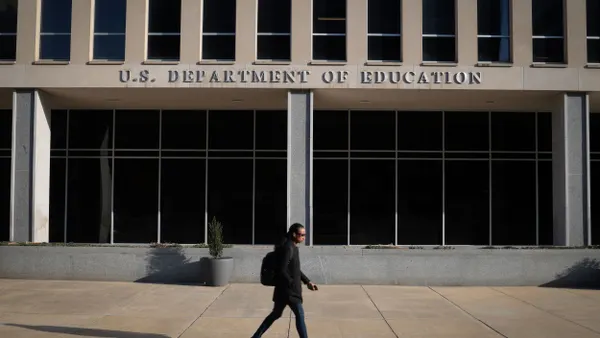Dive Brief:
- While built into national education requirements including Common Core, making group projects successful can be challenging for educators, wrote Education Week. This is, in part, because of "a lack of research on how to set up contexts for problems," one educator told the publication, as well as potential conflict when emotions and differing perspectives get involved, or when projects allow students to slack off — all of which make it hard to band children together as a team.
- Two ways to combat this issue, Education Week reports, is to set a collaborative tone that trains students in this skill before making them use it, as well as making students with different skills solve a problem together. For example, one Virginia school has students create and sign contracts that detail individual contributions and set ground rules for group work.
- It can also be hard to measure the soft skills used in group projects, but teachers in an Arkansas district say mapping out individual benchmarks and developing soft skills rubrics can help measure students' progress in these areas — a job that might be easier with technology, according to Education Week.
Dive Insight:
Group projects, while sometimes hard to launch, can be helpful in fostering and evaluating students' soft skills development, including building trust, self-reflection and listening. Communication is also crucial, as students need to be able to figure out how to get the material they’re all expected to produce, and express those needs, with each other. But when students know they can depend on each other, and that it’s safe to express their feelings when something isn’t working, being part of a team can lead to a positive experience in solving problems and learning things along the way.
As the Washoe County School District in Nevada notes, cooperative group learning can bring about “team building, positive interdependence, group interaction, structure activity and individual accountability,” according to its Student Learning Objectives Instructional Strategies List.
Pitfalls of the practice, though, must also be considered. While group work can foster a sense of accomplishment and community, it can also lead to frustration if, for instance, educators don’t consider the students they are matching together and what potential conflicts might arise. As a result, putting a plan in place prior to launching group work is something teachers should undertake, notes American University’s School of Education.
For example, with every group lesson, the Washoe County School District suggests breaking it apart into different tiers — one that is challenging, one at a specific grade level and one that has scaffolding built in for support — then create groups tailored to each tier.
Educators may also need to help students stay on track to make sure group projects continue to progress. One tool, suggested by the University of Chicago, has team members describe the purpose is of the work and why it’s important to them. Called Cleaning the Lens Protocol, the reflective method is a way for everyone to remember why they’re working for a goal, and has each member of a group hold the other to the steps they’ve agreed to take.





 Dive Awards
Dive Awards






